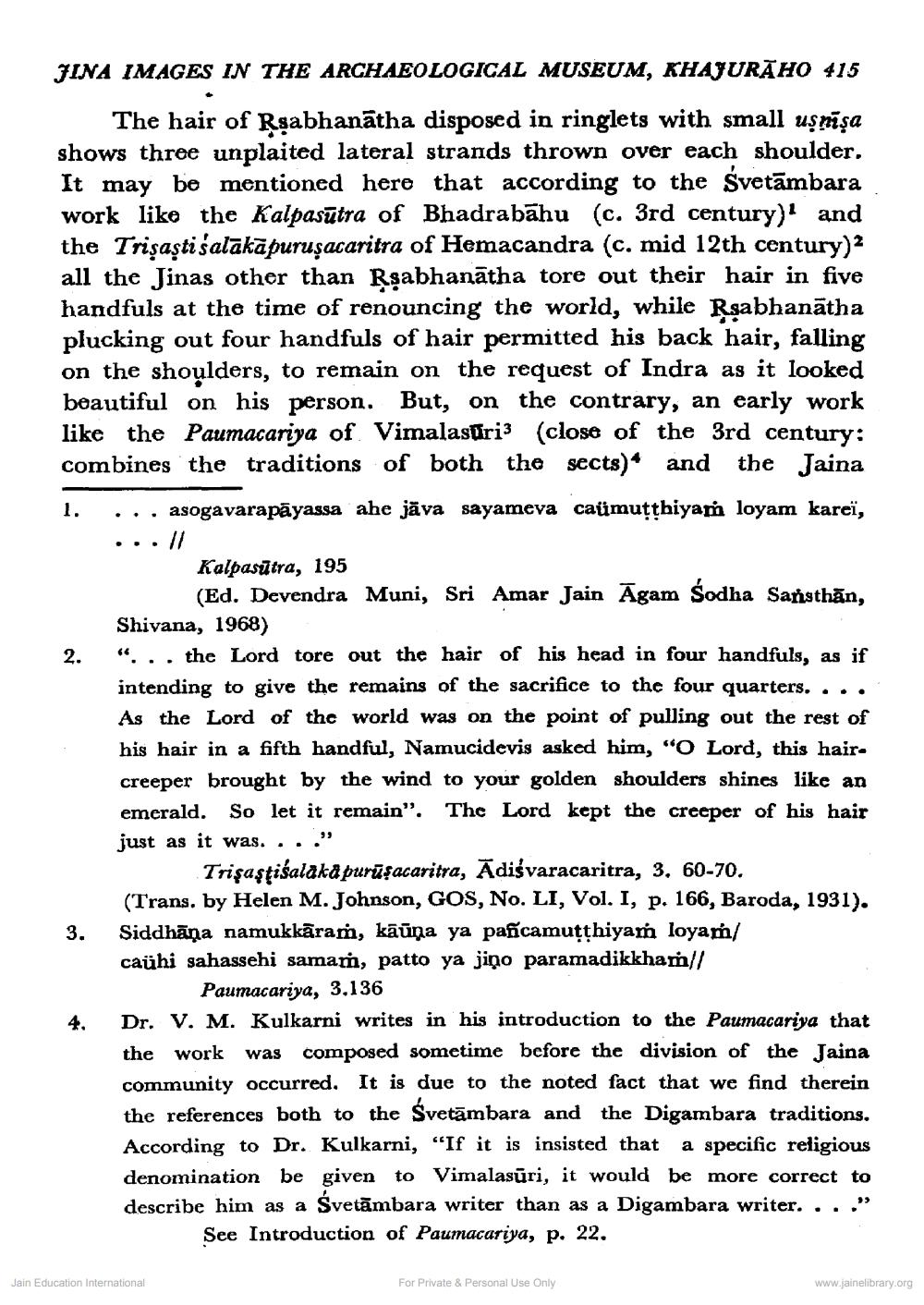________________
JINA IMAGES IN THE ARCHAEOLOGICAL MUSEUM, KHAJURĀHO 415
The hair of Rsabhanātha disposed in ringlets with small uşnişa shows three unplaited lateral strands thrown over each shoulder. It may be mentioned here that according to the Svetāmbara work like the Kalpasūtra of Bhadrabāhu (c. 3rd century) and the Trişasti salākāpuruşacaritra of Hemacandra (c. mid 12th century)2 all the Jinas other than Rşabhanātha tore out their hair in five handfuls at the time of renouncing the world, while Rsabhanātha plucking out four handfuls of hair permitted his back hair, falling on the shoulders, to remain on the request of Indra as it looked beautiful on his person. But, on the contrary, an early work like the Paumacariya of Vimalasüri3 (close of the 3rd century: combines the traditions of both the sects)* and the Jaina 1. ... asogavarapāyassa ahe jāva sayameva caümuţthiyam loyam karei, ...//
Kalpasūtra, 195
(Ed. Devendra Muni, Sri Amar Jain Āgam Sodha Sansthān, Shivana, 1968) 2. “... the Lord tore out the hair of his head in four handfuls, as if
intending to give the remains of the sacrifice to the four quarters. ... As the Lord of the world was on the point of pulling out the rest of his hair in a fifth handful, Namucidevis asked him, “O Lord, this hair. creeper brought by the wind to your golden shoulders shines like an emerald. So let it remain". The Lord kept the creeper of his hair just as it was. ..."
Trişaşțišalakä purūşacaritra, Ādiśvaracaritra, 3. 60-70. (Trans. by Helen M. Johnson, GOS, No. LI, Vol. I, p. 166, Baroda, 1931). 3. Siddhāņa namukkāram, kāūņa ya pañcamuthiyam loyam/ caühi sahassehi saman, patto ya jiņo paramadikkham//
Paumacariya, 3.136 Dr. V. M. Kulkarni writes in his introduction to the Paumacariya that the work was composed sometime before the division of the Jaina community occurred. It is due to the noted fact that we find therein the references both to the Svetāmbara and the Digambara traditions. According to Dr. Kulkarni, "If it is insisted that a specific religious denomination be given to Vimalasūri, it would be more correct to describe him as a Svetāmbara writer than as a Digambara writer....
See Introduction of Paumacariya, p. 22.
Jain Education International
For Private & Personal Use Only
www.jainelibrary.org




